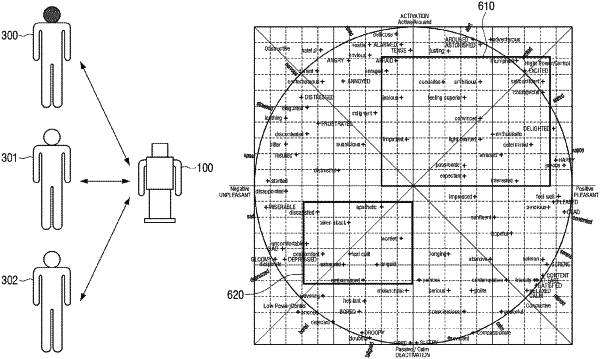| CPC B25J 9/163 (2013.01) [B25J 9/1697 (2013.01); B25J 11/001 (2013.01); B25J 11/0015 (2013.01); B25J 13/003 (2013.01)] | 15 Claims |

|
1. A control method for a robot using an artificial intelligence model, the control method comprising:
acquiring user data related to at least one user;
training the artificial intelligence model to acquire an emotional state for each of the at least one user by inputting the user data related to the at least one user to the artificial intelligence model, the user data comprising at least one image data;
acquiring first data related to a first user, the first data including information regarding a first schedule of the first user;
determining, based on the first data, a first emotional state of the first user by inputting the first data to the trained artificial intelligence model;
controlling the robot to output a first reaction based on the first data and the first emotional state;
determining a character of the robot based on a character area of a character model including a first axis indicating whether an emotion of the robot is positive or negative and a second axis indicating an activity of the robot, wherein the character area of the character model is determined based on a feedback of the first user for the first reaction, a number of interactions with the first user and a service completion rate representing an accuracy of the first reaction of the robot;
acquiring second data related to the first user after determining the character of the robot;
determining, based on acquiring the second data related to the first user, a second emotional state of the first user by inputting the second data to the trained artificial intelligence model; and
controlling the robot to output a second reaction based on the second emotional state and the character of the robot.
|